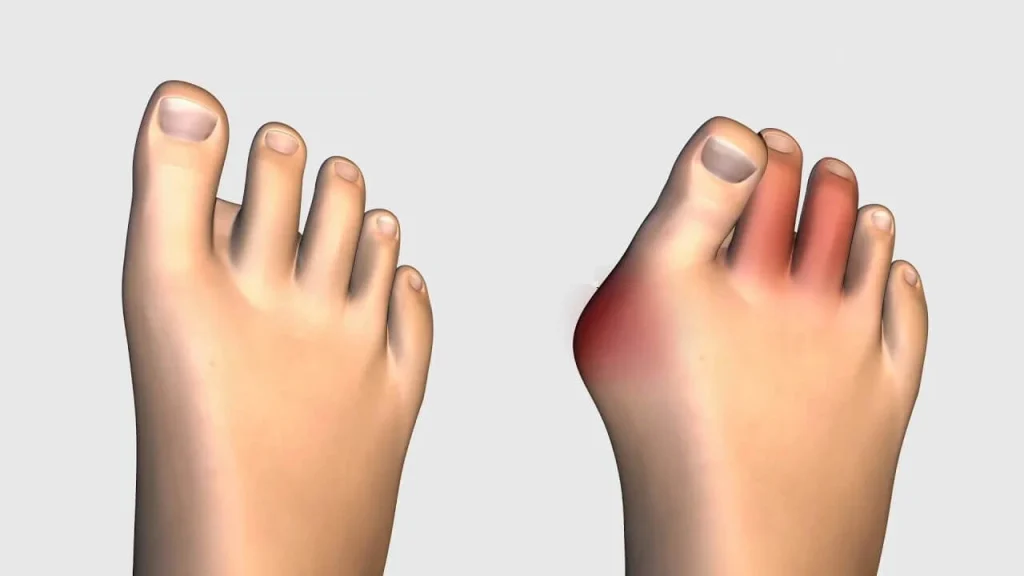If you’ve been living with a painful, frustrating bunion, you’re not alone. In fact, 1 in 3 Americans will develop a bunion during their lifetime — and for many, it’s more than just a cosmetic issue. Traditional bunion surgery often falls short by treating the symptom (the bump), not the root cause: an unstable joint. That’s where Lapiplasty 3D Bunion Correction comes in.
This innovative procedure offers a breakthrough in bunion surgery, giving patients faster recovery, better alignment, and lasting results with a reduced chance of recurrence.

Content
What Is a Bunion and Why Does It Form?
A bunion, or hallux valgus, is a deformity where the big toe shifts toward the second toe, creating a prominent bump at the base of the toe. This shift is typically caused by an unstable joint at the base of the first metatarsal bone, allowing it to drift out of alignment over time. Genetics, improper footwear, flat feet, or injuries can all contribute to this instability.
Many people experience:
- Persistent foot pain
- Inflammation and redness
- Restricted movement of the big toe
- Difficulty wearing shoes
Ignoring a bunion may lead to worsening pain, arthritis, and permanent joint damage. Bunion correction is often the most effective long-term solution, especially when conservative treatments fail.
Why Was Lapiplasty Bunion Surgery Developed?
Traditional bunionectomy procedures typically focus on the visible bump, not the underlying problem. Surgeons would often shave the bone or cut and shift it, but without stabilizing the base of the metatarsal, the deformity can return. Studies show that traditional 2D surgery has a recurrence rate as high as 70% over time.
Lapiplasty was developed to correct the bunion in all three dimensions, addressing the true origin: the unstable joint at the base of the metatarsal. By stabilizing this joint with titanium plating and restoring proper alignment, the procedure provides a more reliable, long-term fix.
How Does Lapiplasty 3D Bunion Correction Work?
Lapiplasty works by repositioning the misaligned bone into its correct anatomical position and fixing it with specially designed titanium plates. The process includes:
- 3D Realignment of the first metatarsal bone to restore natural foot structure
- Fusion of the unstable joint (the tarsometatarsal or TMT joint)
- Use of dual plating technology to lock the bones in place for optimal stability
This triple-approach addresses the bunion at its origin, ensuring the toe stays properly aligned and the joint remains stable — reducing the risk of recurrence and allowing patients to walk within days.
How Is Lapiplasty Different from Traditional Bunionectomy?
| Feature | Traditional Surgery | Lapiplasty Bunion Surgery |
| Correction Type | 2D | 3D (multi-plane) |
| Joint Stabilization | No | Yes (fusion + titanium plating) |
| Recurrence Rate | Higher | Lower |
| Recovery Time | 6–8 weeks (non-weight-bearing) | Walk in boot within a few days |
| Long-term Alignment | Incomplete in many cases | Anatomically restored |
This advanced procedure is a game-changer for people who want to return to walking, exercising, or wearing shoes without pain or limitations.
What Does the Correction Look Like on an X-ray?
X-ray images of Lapiplasty bunion correction typically show:
- Straightened alignment of the first metatarsal
- Full restoration of the joint position
- Titanium plates securely stabilizing the bones
- Elimination of lateral bone drift
These visual indicators confirm the success of the structural correction, offering confidence in the procedure’s precision and long-term durability.
Who Is a Good Candidate for Lapiplasty?
This surgical procedure is suitable for many patients experiencing:
- Moderate to severe bunions
- Bunion recurrence after previous surgery
- Structural foot pain due to misalignment
- Failed conservative treatments (orthotics, taping, splints)
Patients should be in overall good health and able to undergo minor surgery. An evaluation by a board-certified foot and ankle surgeon can confirm if Lapiplasty bunion surgery is appropriate.
What to Expect Before and After Surgery
Before Surgery:
- Consultation and X-rays to assess severity
- Medical clearance, if needed
- Pre-op instructions for medications and fasting
Day of Surgery:
- Outpatient procedure (under local or general anesthesia)
- 60–90 minutes typical duration
- Foot wrapped and placed in a protective boot
Recovery Timeline:
- Days 1–5: Elevate foot, manage swelling, minimal pain
- Week 1–2: Begin walking in boot, no crutches for most patients
- Week 3–6: Mobility improves, light activities resume
- Week 7+: Gradual return to normal footwear and low-impact exercise
Following your surgeon’s recovery plan ensures the best outcome and long-term comfort.
Benefits of Lapiplasty Bunion Correction
- Corrects root cause, not just cosmetic bump
- 3D realignment for full anatomical restoration
- Titanium plating enhances joint strength
- Faster recovery and return to activity
- Long-term results with reduced recurrence risk
It’s not just about straighter toes — it’s about getting your life and mobility back.
Conclusion
Lapiplasty bunion surgery isn’t just an improvement — it’s a complete rethinking of how bunions should be treated. By addressing the root cause of the deformity through 3D bunion correction and joint stabilization, this procedure offers lasting relief, lower recurrence risk, and a significantly shorter recovery time.
For patients tired of the limitations caused by bunion pain — or frustrated by failed results from traditional 2D surgery — Lapiplasty provides a proven path forward. With the ability to walk within days, return to normal footwear, and restore foot alignment with the support of titanium plating, the benefits speak for themselves.
Frequently Asked Questions
What is Lapiplasty bunion surgery?
Lapiplasty is a 3D bunion correction procedure that realigns the metatarsal bone and stabilizes the joint with titanium plating for long-term relief.
How is Lapiplasty different from traditional bunion surgery?
Traditional surgery corrects bunions in 2D, often causing recurrence. Lapiplasty uses 3D realignment and joint fusion for lasting results.

Jesus is a health blog author who has been writing about nutrition, fitness and healthy living for over 10 years. He also loves to run, hike and bike with her wife.



